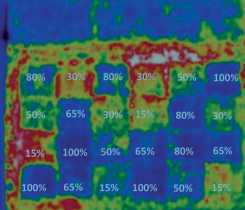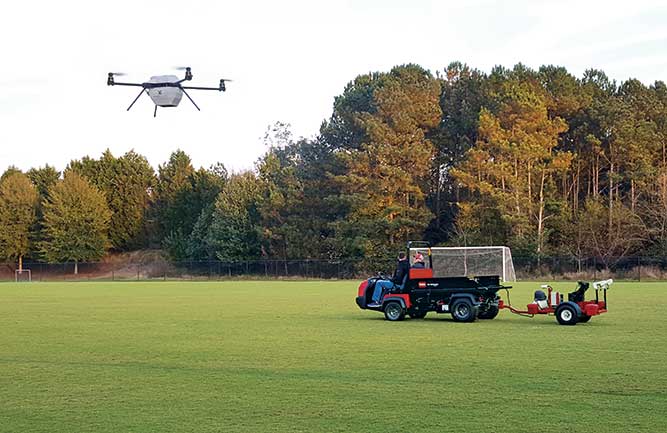Supers share how they’re focused on the future of irrigation
Every July, the Irrigation Association celebrates Smart Irrigation Month. The initiative gives irrigation professionals an opportunity to boast about the benefits of smart irrigation and share how their company promotes that practice. This year’s theme is “Proud of our past. Focused on our future.”
Using that theme as a queue, we looked west to ask three friends of Golfdom — a longtime superintendent and two young turf brothers — about the future of irrigation.

Josh Lewis
Thinking water 365
Water and irrigation hurdles stemming from the drought seem to pop up in more areas of the Pacific Northwest, says Josh Lewis, a partner at Los Angeles-based Gradoville and Hertzing Management Group. Lewis has worked in golf maintenance for more than 25 years, with time spent at seven top-100 courses.
“The thing with irrigation and water, in general, is that (the drought) region is getting very big,” Lewis says. “We’re starting to see these issues creep into Oregon quite a bit. Colorado is just getting hammered right now. Texas, the whole southwest. In a place like Oregon, the water is just so shallow in a lot of the wells right now. It’s still a regional problem, but it is definitely spreading.”
As that water shortage region gets bigger, Lewis says his firm’s clients put extra effort into staying up-to-date on management technology.
“We’re thinking about water out here 365 days a year,” Lewis says. “That can mean in-ground moisture sensors, hand-held meters, TDRs. If you don’t have hand-held moisture meters at this point, you’ve been living under a rock or something. That’s some of the greatest tech, in my opinion, to come along in decades. Irrigation systems, obviously, are also making several updates to controls and hardware. People are really coming to that realization, the need to upgrade.”
Diving into drones
Jason Fuertes, superintendent, Industry Hills Golf Club at Pacific Palms Resort, City of Industry, Calif., foresees irrigation stalwarts like TDRs complimented by drone technology.
“The TDR testers have worked well for us,” he says. “We’ve talked about bringing out the drones to start paying attention to areas that are really being affected. It’ll show us an area where we can say, ‘Do we really need water?’ or, in the future, is this an area where we’re going to have to remove some turf?”
Brian Fuertes, Jason’s younger brother, assistant superintendent at Spyglass Hill Golf Course in Pebble Beach, Calif., agrees that drone technology will be a big part of the future of irrigation

Jason Fuertes
“A lot of my master’s degree was dealing with drone technology, hyperspectral imaging, hand-held spectral radiometers, things like that,” he says. “It was interesting to dive into. Drone technology hasn’t been implemented here yet, but it could definitely help out. The hyperspectral camera can detect things and see colors in a way we can’t necessarily see.”
A drone with a hyperspectral camera can detect plant diseases, weeds and soil erosion problems, Brian Fuertes says. He adds that when used in agriculture, it can estimate crop yield.
“When I used that camera, it could detect all of these areas on the verge of wilting and if something else was out of the ordinary,” Brian Fuertes says. “It was able to give us that data back very quickly. In a golf course setting, it can give a great general idea of what to expect over the course of a few days.”
The younger Fuertes adds that while a hyperspectral camera can be helpful in proactively detecting drought-related problems, it can be put to even better use in finding more subtle hurdles that occur under normal conditions.
“A lot of the problems we’re facing are quite obvious and just right there in front of you,” Brian says. “(But) you have to also think about training someone in being proficient in observing the imagery and compiling the data. The drone is another eye, which is good.”
Hyperspectral cameras have also been used to estimate chlorophyll concentrations in pond water as well as the scope of pest infestations.
Come together
Lewis hopes to see an expansion of artificial intelligence (A.I.) into irrigation technology, and, like the Fuertes brothers, he believes drones will play a key role in mitigating any new or expanded struggles with irrigation.
“All of those things will be integrated into your entire system and start to talk to your entire system,” he says. “You’re going to see this technology that, right now, is existing on its own as a stand-alone start to be able to talk back and forth. You’ll have the drone system talking directly to irrigation central control. All of that equipment speaking and playing well together will take a lot of work off the superintendent’s or the assistant’s shoulders.”












